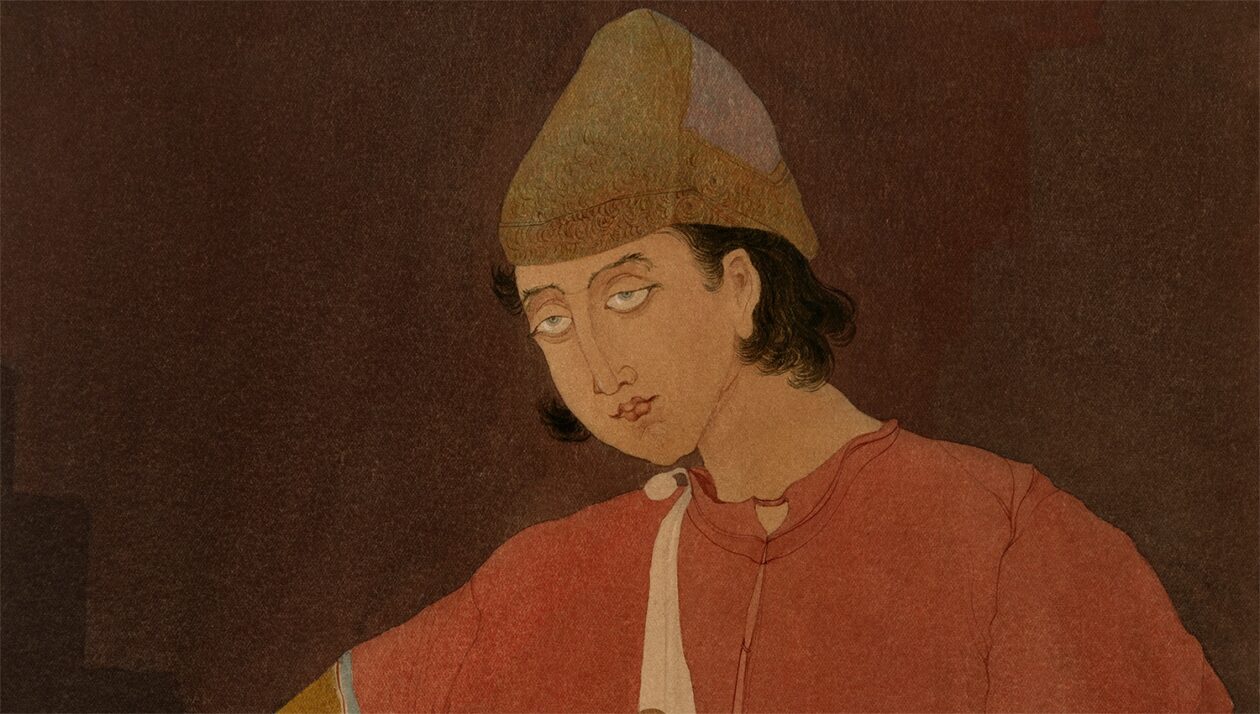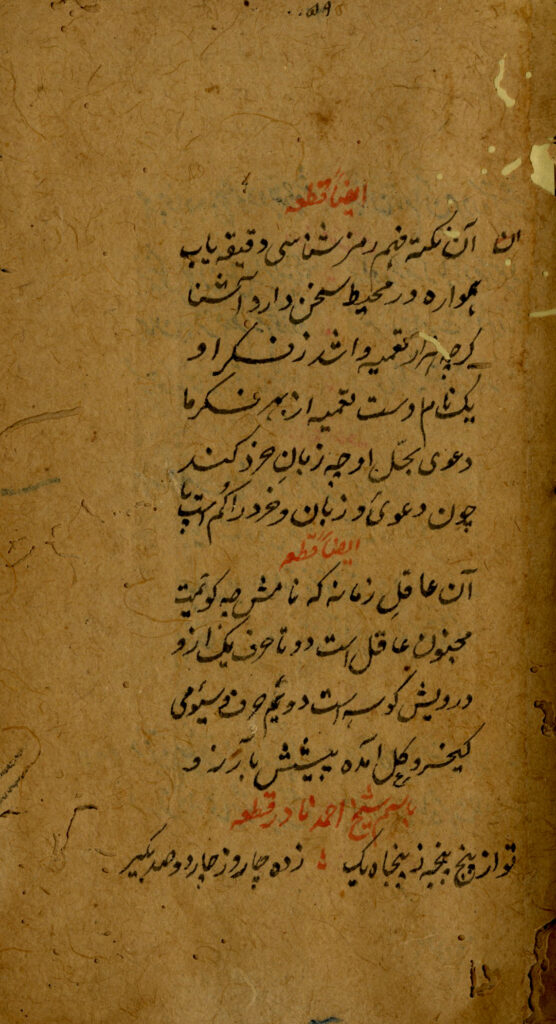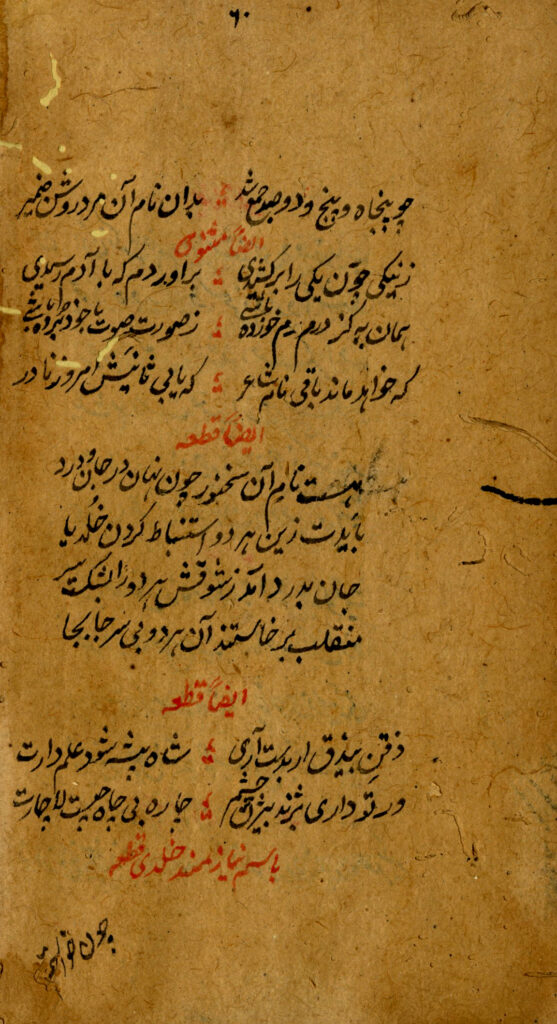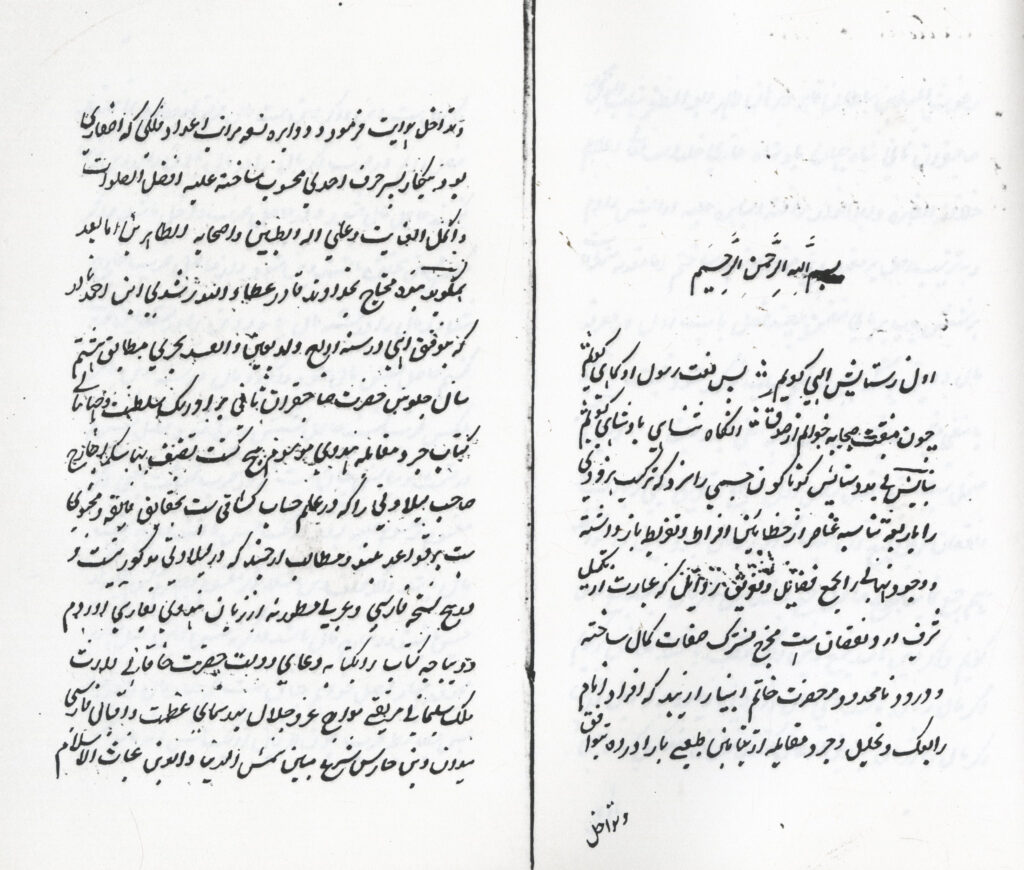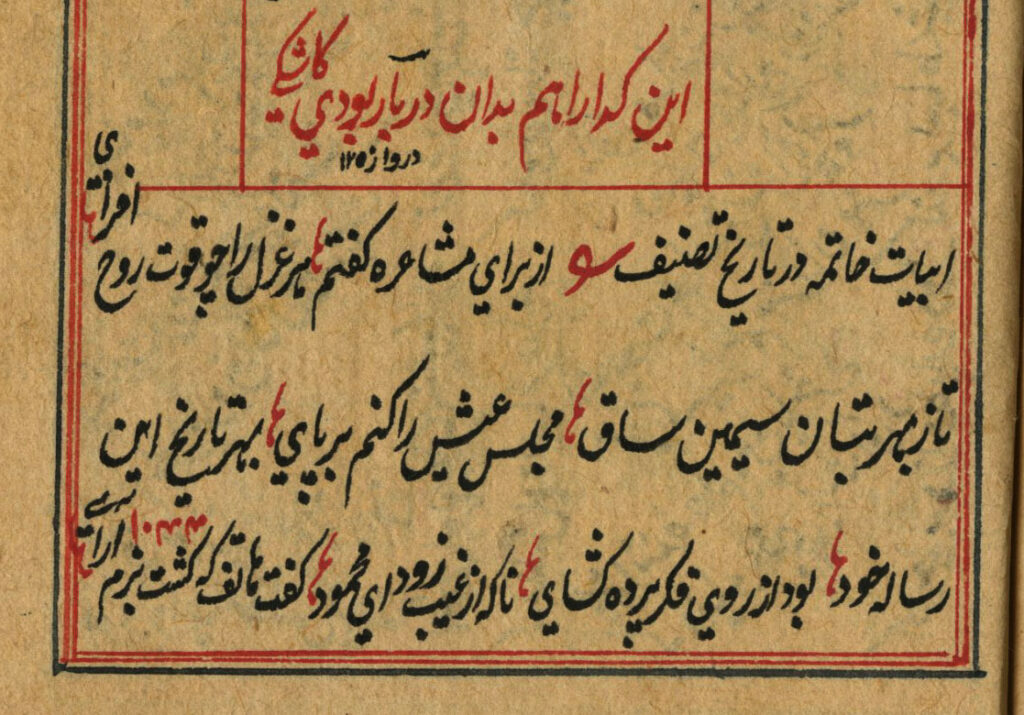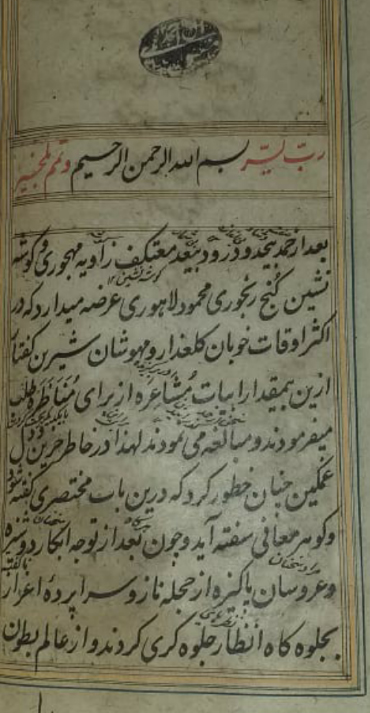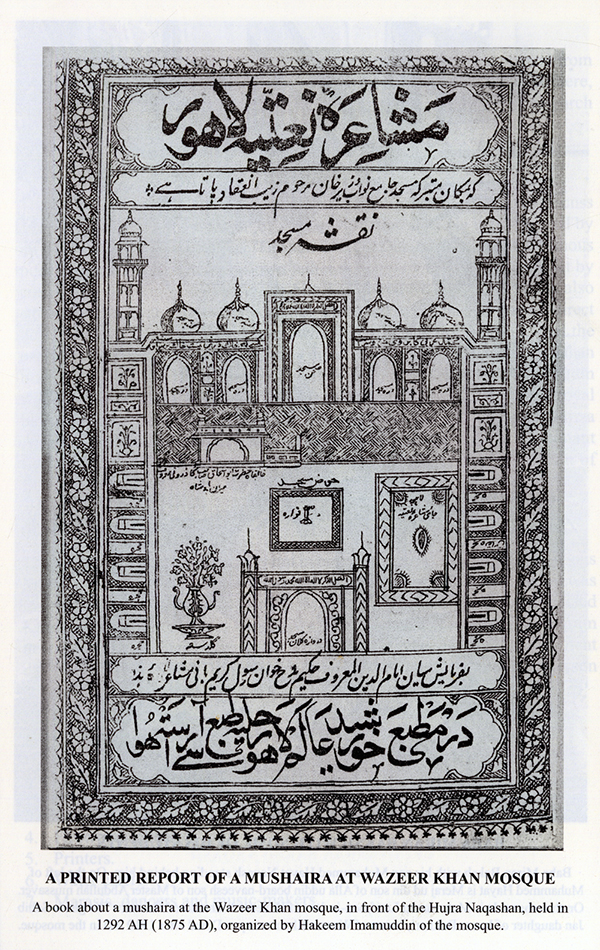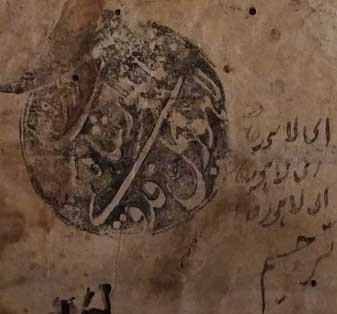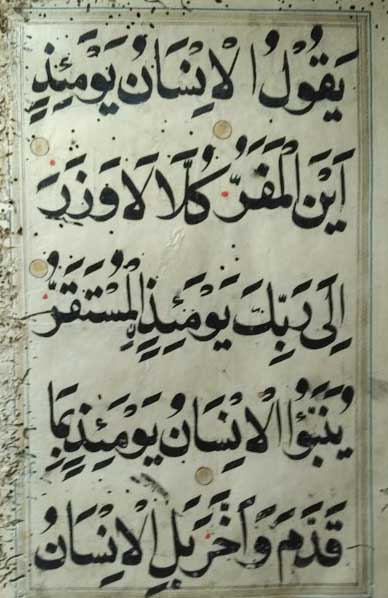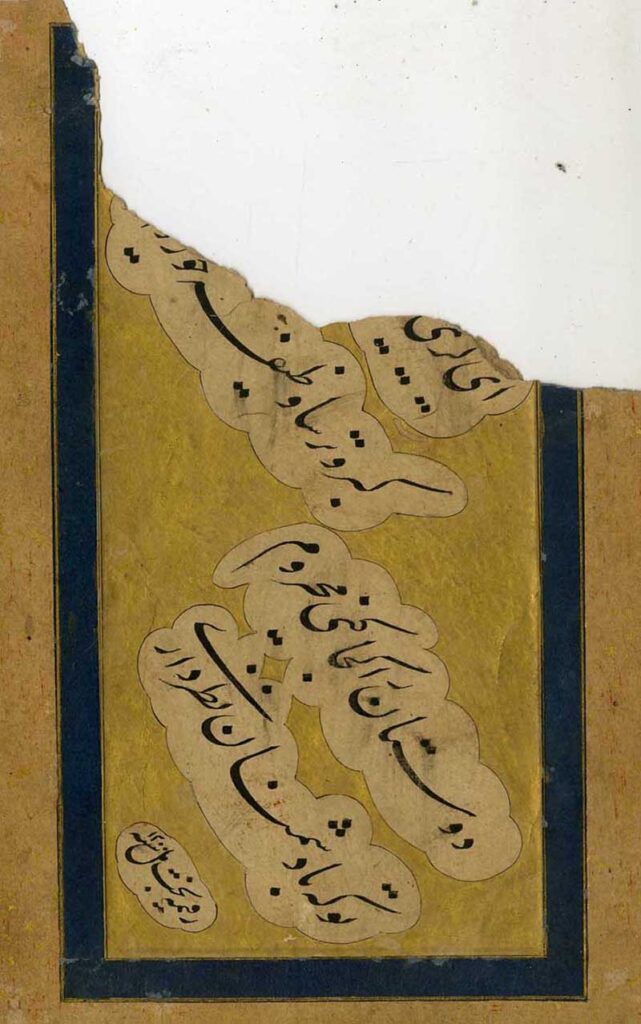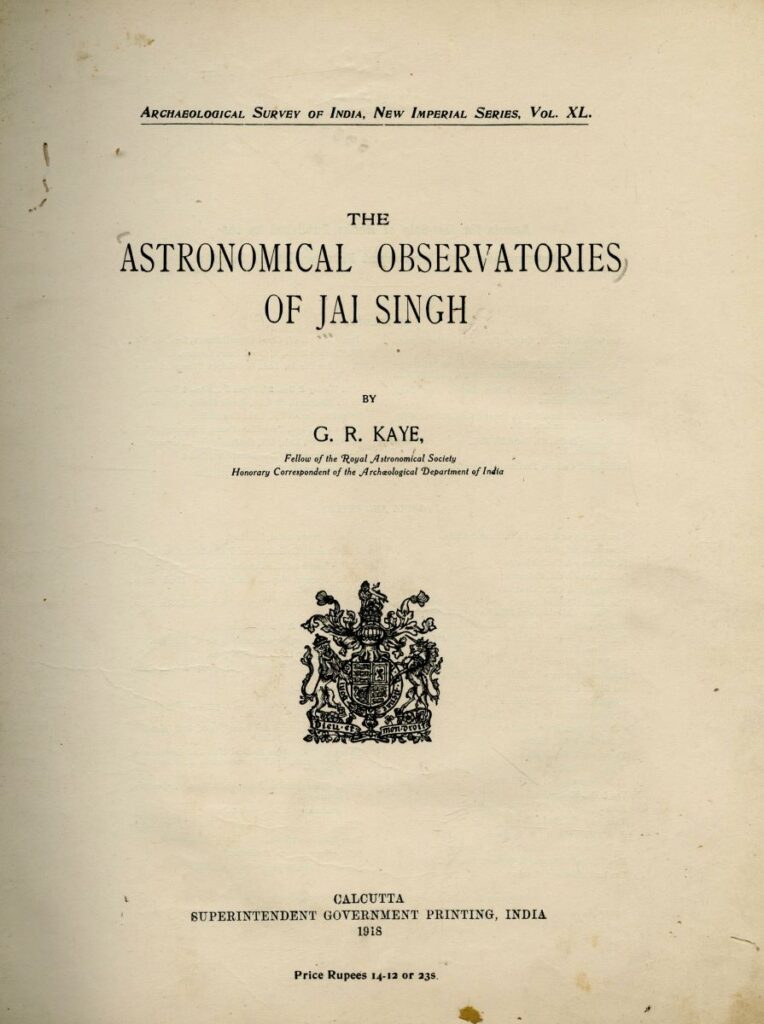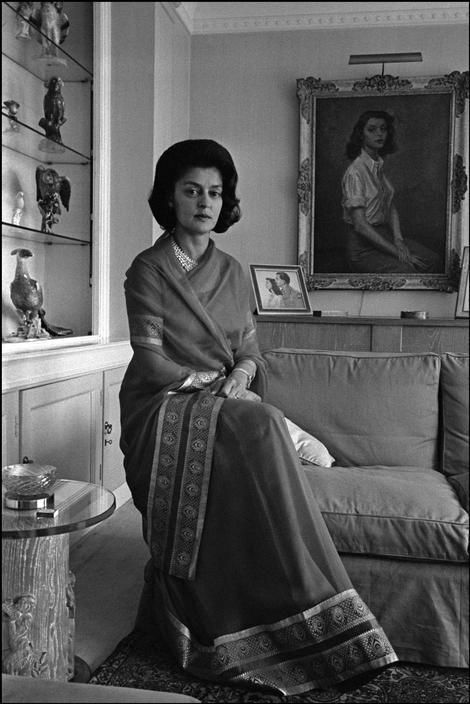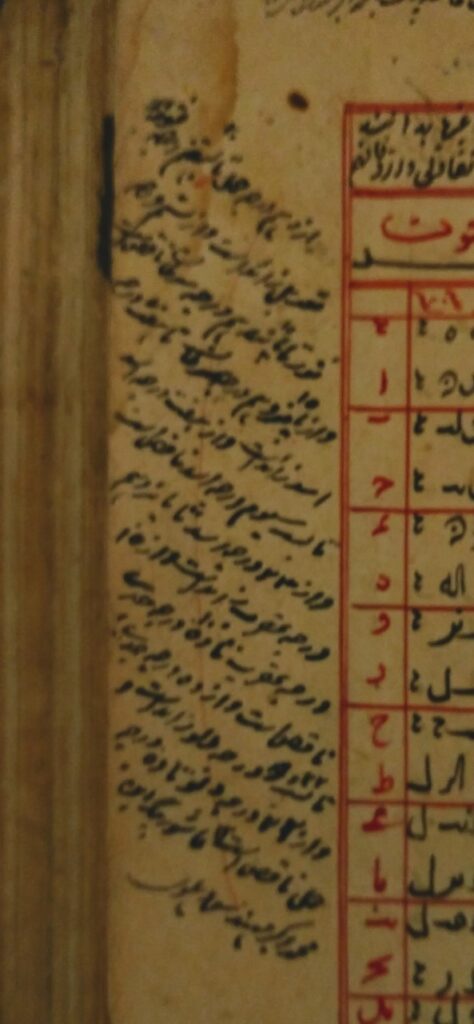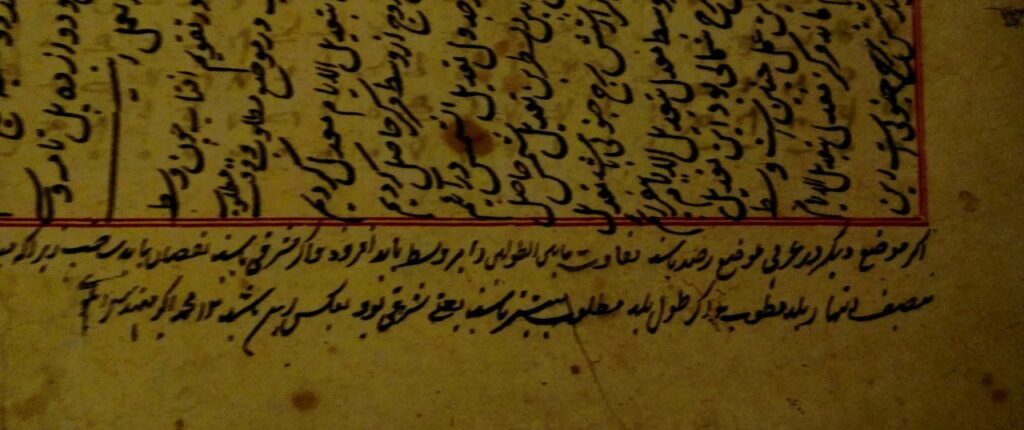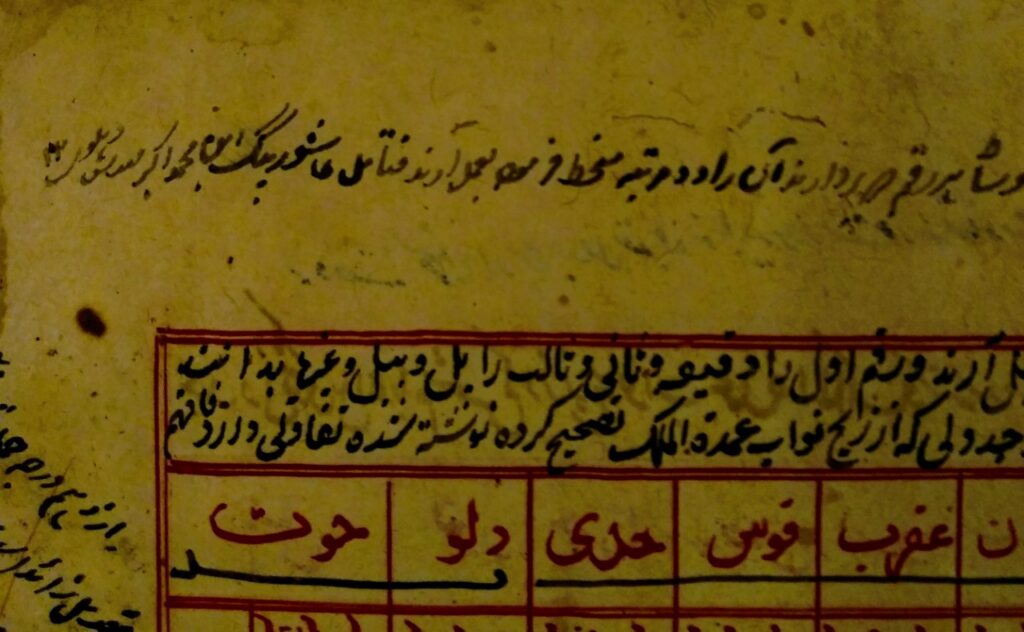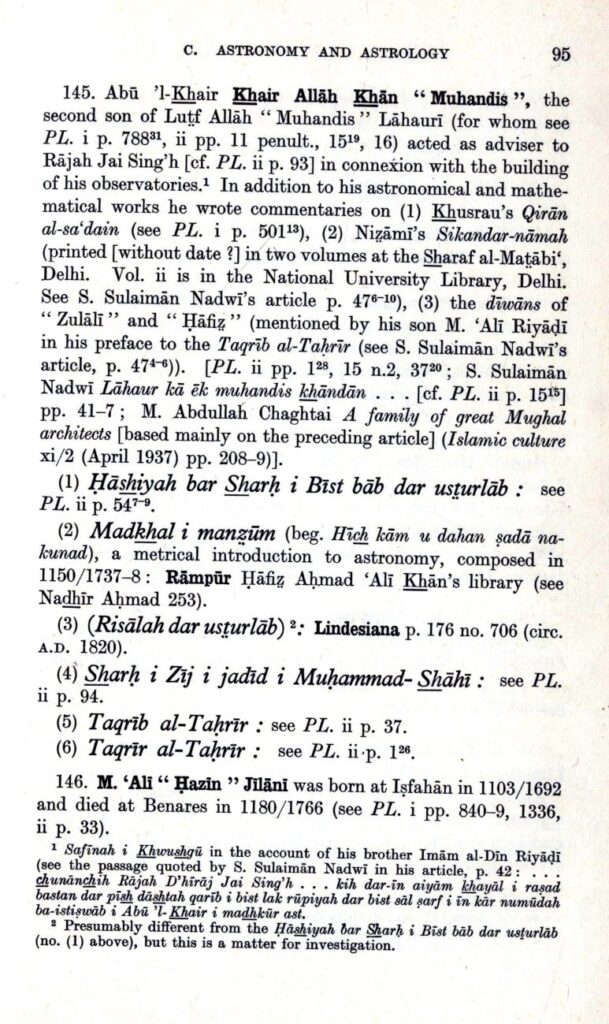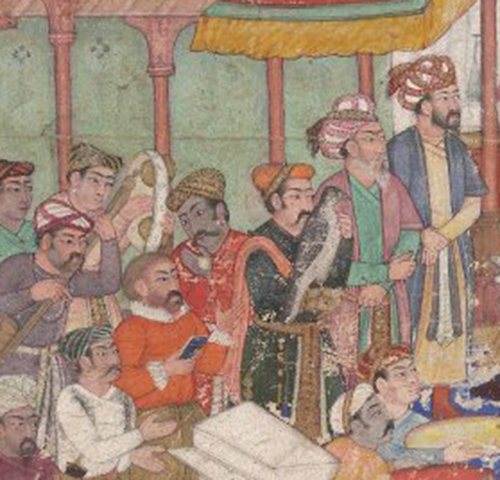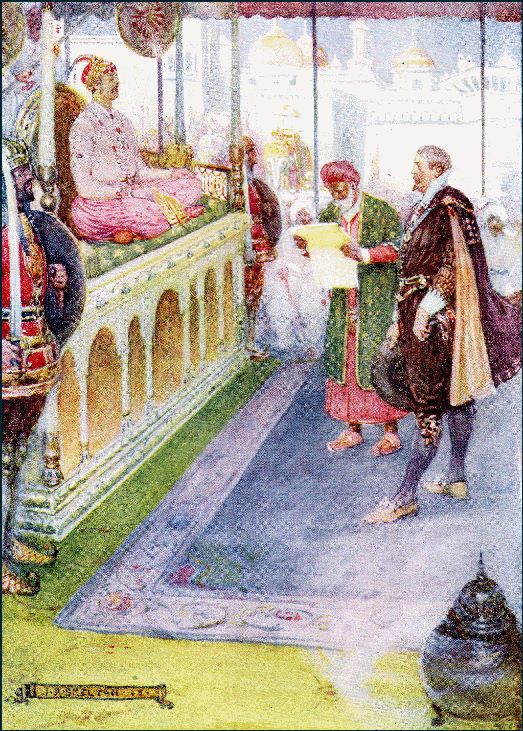THE TRADITION OF MUSHAIRAS IN OUR CULTURE;
POETIC GATHERING IN LAHORE IN YEAR 1044 A H.
INAUGURATION OF MASJID WAZEER KHAN LAHORE.
The Wazir Khan mosque in Lahore was completed in 1044 AH. All this is on record. Also on record is that efforts were made from day one to make it a total cultural center. With the mosque a madrassa was generated and opportunities for literary gatherings. In an indirect way in a copy of Diwan Mahmood Lahori, the year of 1044 AH is given as a day of mushaira in Lahore. It seems that Mahmood Lahori who had come to the region in those times, presented a Masnavi of Mahmood and Ayaz, that is Sultan Mahmood Ghaznavi and the Governor of Lahore Ayaz,. This collection is there in many copies of same. We have seen copies dated in 18th and 19th century. But the initial reference is about a poetic gathering in 1044 AH. With this Diwan of Mahmood Lahori is attached another Diwan of Ahmad Nadir. And just who is this, Ahmad Nadir? It is a diwan of Ustad Ahmad Lahori, who had the takhallus of Nadir, after Shah Jahan had decorated him with the title of Nadir ul Asar or Wonder of the Age. This title of Nadir is confirmed in other books, including the statement by his son Attaullah Rushdi. The writing of poetry was there with many members of the family, and the famous Diwan of Muhandis, that is Lutufullah Ahmad. The Diwan of Khairullah Muhandis was discovered too recently. Poetry was in the blood of the family, as expressed in their architectural creations.
An actual clue to these gatherings come from an inscription written by a poet Mirak Dost Muhammed in 1053 AH which is there on the wall facing the south bazaar of the mosque. The complete inscription could not be deciphered but the date and name are very clear. The name Mirak appears in the Tazhkiras of that time, but also finds reference in architects of that period.
And the inauguration of the mosque was not merely Mushairas. But philosophical and religious discussions as well. By Grace of Allah, we have a small religious discussion done in the same event, and the writer is one Muhammed Hamid, and the date is again 1044 A H. Picking up clues from past is a lot of hard work as well as sheer luck at moments. This Hamid may be Hamid Mimar, partner, friend, cousin or even brother of Ustad Ahmad Mimar. Obviously, speculations! But there is more to discover. It talks of a session of discussion over QATIL HAMZA or the murderer of Hazrat Hamza, and the people involved are all living legends. The name is of Qazi Sufi, Allama Rabbani, Mulla Saad ud din Ali Kashfi, and Imam Quli Bakhtawar. The session was chaired by Mulla Baqi. And here is another clue. Abdul Baqi was a leading calligrapher of those times and came from Iran and later went back to Iran. All these people were alive and inter related to each other through various means.
The meetings in Wazeer Khan Mosque continue to be mentioned in various times. Dara Shikoh’s Munshi Brahman mentions same. Mufti Ali uddin in his Ibrat Nama of Punjab mentions same too. A book can be written on those sessions alone. A rich cultural legacy set in motion, and stopped by the British. But that is another story!
